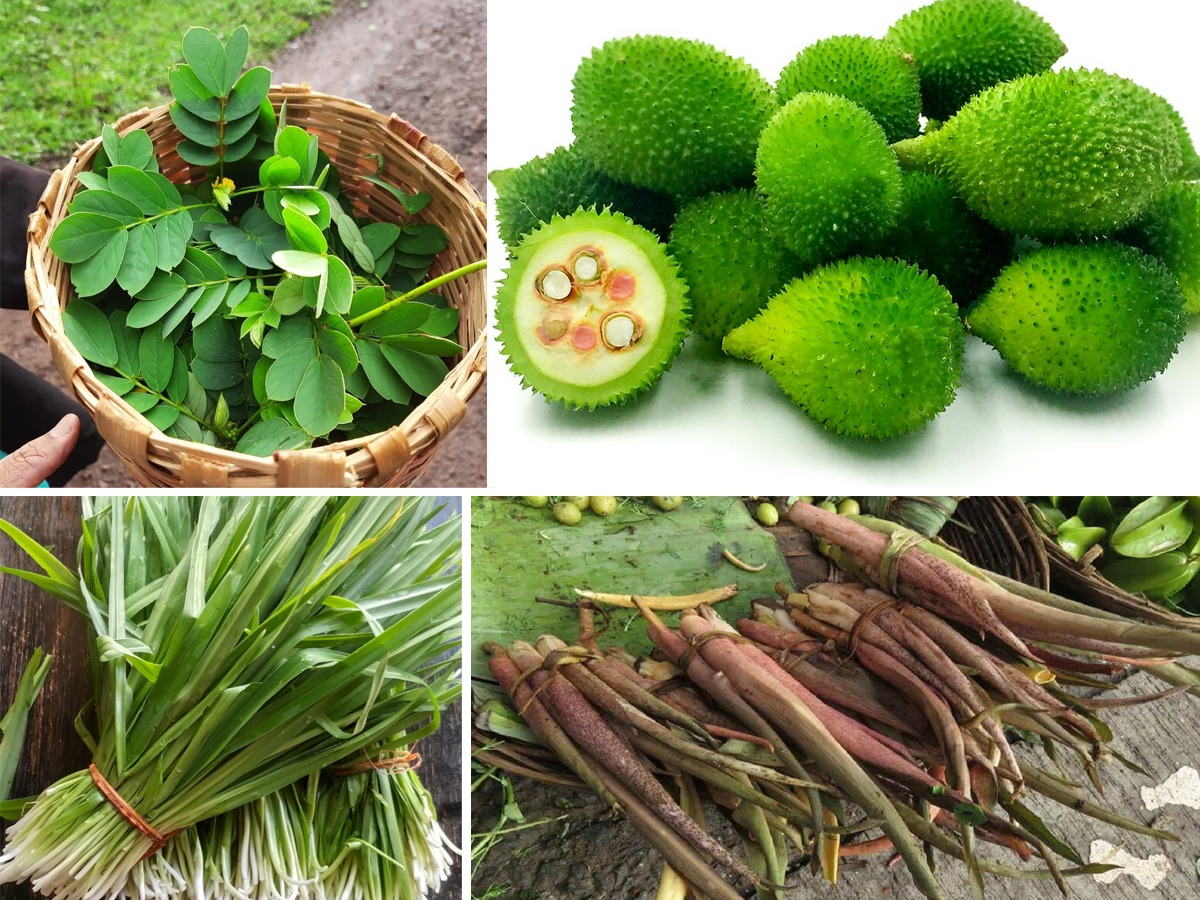The village folks are fortunate in a way that they consume fresh foods grown in their fields and backyards, most often organically farmed

This year Shravan has changed its usual demeanour, the hide and seek of sunlight and showers, and the mesmerising rainbows that adorn clear skies have gone missing. Despite the religious fervour in homes and temples, weather is dull and depressing with overcast skies and incessant rains. Rice fields are yearning for that magical yellow sunshine after prolonged showers and shivers. The landscape is picture perfect and tranquil. The green fills the land and tiny colourful flowers bloom through the pastures, the streams having slowed down after the rush and gush of monsoons.
The season has a strong influence on our diet, with many seeking to discipline their tongue and gut with vegetarian food. This could be because the calm externalities of the season may slow down our internal processes making digestion of heavy, rich, meaty foods a bit difficult. Such ‘seasonal dietary moratorium’ rests and cleans the colon, besides reigning in our food cravings. Another possibility is that this ‘dietary minimalism’ and consumption of ‘Satveek Ahar’ helps to sync our mind and body with divinity that fills the air in this season. Thirdly and more rationally, there is so much out there that is seasonal, edible and nutritious! I am convinced that our elders have had this understanding about seasonal foods and their nutri-therapeutic value. They smartly used religion to promote this dietary wisdom among people. Additionally, this exposed the people to outdoors, to scout for these seasonal edibles and instilled in them love, respect as well as a sense of custodianship for these precious natural resources.
Sadly, our urban lives have been infiltrated by a sense of inferiority and shame about all that is ancient and traditional. We’ve almost come to believe that the city dwellers are a subspecies of humans (Homo sapiens urbanus) different from our brethren residing in the rugged countryside. Our homes are invaded by expensive, exotic vegetables, fruits and other imported edibles that give us a feeling of elation and aristocracy. Our refined oils, cooking gadgets, expensive crockery, cutlery and mahogany dining tables with marble tops do not guarantee a balanced nutritious food though. The price tag of food items we purchase is no indicator of nutritive value of what we consume. And as matter of fact, a healthy diet can be ensured without exorbitant costs, using fresh seasonal locally grown dietary ingredients, earthen-ware, and reviving traditional recipes.
The overemphasis on visual appeal and arrangements of foods surely makes food attractive, but not necessarily nutritive. The food additives used in enhancing sensory qualities; like tastemakers, colours, preservatives have their own damaging effects on human health.
So, while the affluent consumers may eat a lot, they could still be malnourished owing to foods deficient in essential nutrients, on the other hand junk foods give empty calories that are not used in building muscles but instead get stored as fat. While it is said that ‘the way to a man’s heart is through his stomach’, rise in dietary disorders affirm that ‘the kind and quantity of food that enters the stomach shall decide the overall health of man, women, and children’. ‘Eat right’ is the new mantra, and dieticians are indispensable for holistic practice of modern medicine, because a lot of disease aetiology is centred around faulty diets.
The village folks are fortunate in a way that they consume fresh foods grown in their fields and backyards, most often organically farmed. Their recipes are simple and devoid of artificial additives. Importantly, they harvest the seasonal wild vegetables from fields and forests and utilise these in their culinary. Many of these wild vegetables have proven medicinal properties besides their dietary attributes.
Three days ago, my wife who is a dietician by profession and I visited a state sponsored ‘Ranbhaji Festival’ (Festival of Wild Vegetables) at the newly inaugurated Ravindra Bhavan in Canacona, a bastion of Velips, one among our four ethnic communities. In the foyer of the impressive building were cheerful uniform-wearing school children manning counters that displayed several traditional recipes made from wild vegetables. The fresh specimens of the wild flora were also displayed accompanied by charts explaining their local names and uses in diet. Most importantly the kids invited the visitors to taste the recipes exhibited.
Likewise, many self-help groups of women from neighbouring areas had put up impressive stalls displaying the seasonal vegetables, flowers, fruits, tubers and seeds. The confidence with which they spoke to us was amazing. I could gauge their sense of pride in their traditional foods, their respect for their soil and forests; and above all their desperation to protect and propagate this traditional dietary knowledge, that has sustained their generations and shielded them from under nutrition and malnutrition. A few preparations like Ankoor had prawns added and we avoided tasting them as Shravan was still on. But I feasted on at least some 15 varieties of vegetables graciously offered by these women dressed in colourful sarees, beaming with confidence and unpretentious smiles. I felt a sense of pride as well, for my state and its original settlers.
As I was returning from this wonderful exhibition of Goa’s ranbhaji, I met Dr Pradeep Sarmokadam of Goa State Biodiversity Board, the man who never fails to amaze me with his passion and ground efforts for biodiversity conservation through capacity building of the local community. I thanked him with folded hands and pleaded that this event should not remain an annual exhibition alone; but a platform to sensitise, incentivise and encourage our forest dwelling communities to continue playing custodians for this wealth that we hold in our forests. As we drove back to Margao, I realized that our ‘palate pleasure’ was sabotaging our healthy foods.